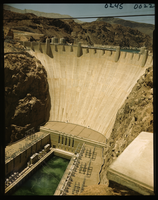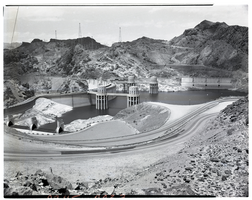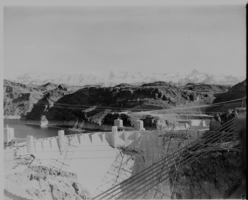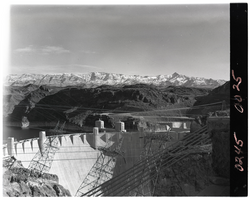Search the Special Collections and Archives Portal
Search Results
Layton O'Neill oral history interviews, 2004 July 02
Level of Description
Archival Collection
Collection Name: Nevada Test Site Oral History Project Records
Box/Folder: Digital File 01
Archival Component
Melva O'Neill oral history interview, 2004 July 02
Level of Description
Archival Collection
Collection Name: Nevada Test Site Oral History Project Records
Box/Folder: Digital File 01
Archival Component
Peluaga, Hank (Henry Aloy)
Henry Eloy Peluaga was born on November 21, 1927, in Eureka, Nevada. Henry married Lola on July 16, 1950, and they had three children: Henry, Steven, and Sherry.
Peluaga was enlisted in the United States Air Force.
Peluaga was a shifter walking boss miner in affiliation with the Nevada Test Site. Peluaga had previously been employed as a sheepherder, truck driver, cowboy, bartender, and race car driver.
Person
Bostian, Peggy L., 1940-
Peggy L. Bostian was born September 7, 1940 in Bellingham, Washington. Bostian has two children, Troy Michelle Bostian and Bonni Lyn Bostian.
Bostian's affiliation with the Nevada Test Site was at Reynolds Electrical & Engineering Company (REECo) and EG&G Energy Measurements. Bostian also worked part-time at the Atomic Testing Museum.
Person
Lopez, Luciano Acevedo
Luciano Acevedo Lopez was born on January 11, 1930 in Harshaw, Arizona. Luciano married Frances on July 3, 1948 and they had four children: Julian, Eddie, Oscar, and Irene.
From 1985 to 1993 Lopez was a miner for the Nevada Test Site.
Lopez passed away on November 9, 2009. Source: https://www.findagrave.com/memorial/44263951/luciano-lopez
Person
Sowder, Elmer Jesse
Elmer Jesse Sowder was born on January 4, 1923, in Amarillo, Texas. Elmer married Jeanie on February 14, 1996, and they had four children: Carol, Cheryl, Kerry, and Kay.
Sowder attended Texas A & M College and was enlisted in the United States Marine Corps.
Sowder worked as a test director for the Los Alamos National Laboratory (LANL) in affiliation with the Nevada Test Site.
Person

Film transparency of the face of Hoover (Boulder) Dam, taken from the downstream side of the dam on the Arizona side, May, 1947
Date
Archival Collection
Description
Image

Film transparency of Hoover (Boulder) Dam, taken from the upstream side of the dam on the Arizona side, May, 1947
Date
Archival Collection
Description
Image

Film transparency of the face of Hoover (Boulder) Dam, taken from the downstream side of the dam on the Nevada side, May, 1947
Date
Archival Collection
Description
Image

Film transparency of the face of Hoover (Boulder) Dam, taken from the downstream side of the dam on the Nevada side, May, 1947
Date
Archival Collection
Description
Image
